Wool and fleece are both fabrics that are typically worn during the winter time. But if you’re heading out on a cold weather adventure, you may be wondering if wearing wool vs. fleece really matters. I mean, what’s the difference between the two? And is one of them better than the other? That’s why I created this guide to wool and fleece fabric.
The major difference between wool and fleece is that wool is a natural fabric, while fleece is synthetic. But, there are also smaller differences between the two regarding warmth, weight, softness and cost, among other things. The differences ultimately boil down to how the fabric is made.
Both fleece and wool serve the ultimate purpose of keeping you warm in cold weather. But the differences between the two may influence your decision as to which one you think is the better choice. In this guide, we’ll explore the differences between the two and the pros and cons of each. That way, you can decide for yourself whether wool or fleece is the better choice for you.
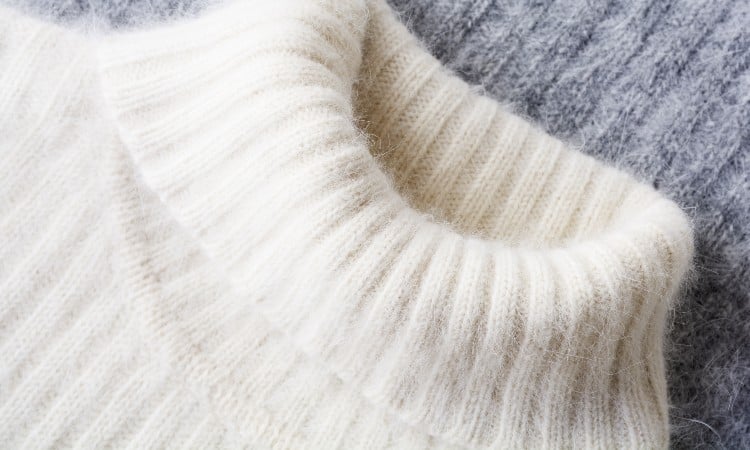
Wool vs. Fleece: Key Points
| Wool | Fleece | |
|---|---|---|
| Breathability | Very breathable | Breathable unless coated with chemicals (e.g. flame retardant) |
| Durability | Less durable than fleece | Very durable |
| Warmth | Warmer than fleece, unless wet | Warm, but not as warm as wool |
| Weight | Heavier fabric | Lightweight fabric |
| Softness | Soft, but can feel scratchy | Softer than wool, sometimes similar to cotton |
| Moisture Wicking | Repels water but can take longer to dry if it gets soaked | Has low absorbency, dries quicker if it gets soaked |
| Ease of Care | Requires special care- hand washing preferred | Low maintenance |
| Cost | Can be pricey | Less expensive |
| Uses | Outerwear, blankets, scarves | Outerwear, blankets, scarves |
What is Wool?
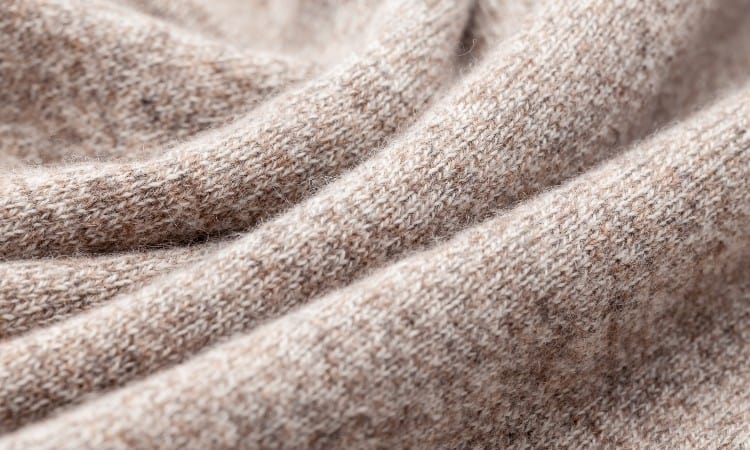
Wool is a natural fabric that has been in use for thousands of years for making textiles. Many people think that wool comes only from sheep, but wool can come from other animals. Some examples of these animals include goats, alpacas, llamas, and even musk oxen.
There are around 1 billion sheep in the world, so that means that sheep’s wool is the most common type of wool used for textiles. However, there are different breeds of sheep, meaning that even sheep’s wool can have different varieties, with some being more expensive than others.
Other types of wool include cashmere, which comes from a cashmere goat and qiviut wool, which comes from the musk ox. However, these are both rarer types of wool.
Another type of wool comes from llamas and alpacas and is typically referred to as fleece due to the differing in texture from other types of wool. This is where some confusion comes in because, in this case, fleece is a natural fiber. But fleece from llamas and alpacas is still technically a type of wool.
To make wool fabric, the fur from wool-producing animals has to be shorn once a year. Shearing the animals is necessary for their health, and it keeps them cooler during the summer months. Without being shorn, the fur can become matted and tangled and can harbor bacteria, which can make the animals sick.
Since the wool had to be shorn anyway, early civilizations found a way to make use of it: by creating a fabric to use for clothing and other textiles. Today, making wool fabric involves separating the fibers, sorting and cleaning them, then spinning them into a yarn. Afterward, the yarns are woven together to create fabric.
Since wool can come from so many different animals, the texture and qualities of wool fabrics can differ slightly depending on what animal it came from. But in general, wool is very warm, durable, and often expensive.
What is Fleece?
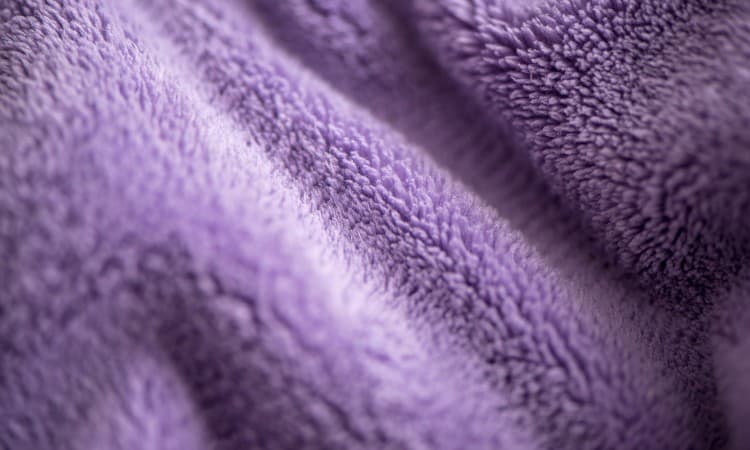
I already mentioned that the term fleece is used to refer to the wool of alpacas and llamas. But in the world of textiles, fleece is more commonly used to describe a synthetic fabric. Synthetic fabric is man-made in a factory, not a natural fiber like wool or cotton that comes from animals or plants.
Fleece isn’t synthetic wool, but it was invented to imitate it. It is a soft fabric that can have different textures depending on how it is made. Fleece is typically made from polyester, but it can have other fibers blended in to give it a certain texture.
Fleece fabric is made by first creating polyester. Polyester is a type of plastic that is made from petroleum and other chemicals. Once polyester is created, it is spun into yarn. The yarn is woven together in a certain way to create the fabric. Different types of weaves can create different types of fleece fabric.
One example of fleece fabric is known as sherpa. Sherpa fleece is made from 100% polyester, but it has a fluffy texture and is often used as a lining for jackets and knit hats. Another type is called polar fleece, which tends to be thicker and is often used for making blankets.
While most types of fleece fabric are made from 100% polyester, some are made from a blend of polyester and cotton. This type of fleece is usually used as an interior lining for shirts and pants. Polyester fleece can also have spandex blended, which makes it more stretchy. This type of fleece is typically used for cold-weather activewear.
As you can see, being synthetic gives fleece a lot of versatility. There are so many different types of fleece, but they are all designed to be very durable and keep you warm,
What’s the Difference Between Wool and Fleece?
Breathability
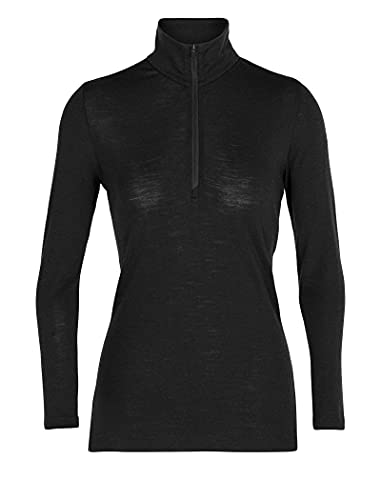 With fabrics designed to keep you warm, you want them to have some level of breathability to remain comfortable. Both wool and fleece are generally very breathable.
With fabrics designed to keep you warm, you want them to have some level of breathability to remain comfortable. Both wool and fleece are generally very breathable.
However, remember that wool is a natural fiber, which means it is slightly more breathable than fleece. That’s because wool was originally the coat of an animal, so it needs to circulate air among the fibers very well.
Since there are different types of fleece fabric that are woven in different ways, some of them are more breathable than others. For example, sherpa fleece can sometimes feel stuffy depending on how it is used for clothing.
Fleece can be coated with chemicals such as flame retardant or a waterproof coating. This lowers its breathability because air can’t penetrate the fibers as easily. In terms of which fabric is more breathable, wool has a slight advantage.
Durability
Since fleece is made from synthetic materials, it is generally more durable than wool. One of the benefits of synthetic fabrics is that they are created to be durable and long-lasting. The fibers are very strong and don’t break easily. They generally don’t require a lot of extra care to keep them in their best shape.
On the other hand, wool is durable as long as you care for it properly. It is a very strong fabric and is more durable than other natural fabrics like cotton and silk. The fibers are very flexible and hard to break, but wool can lose some of its qualities over time if you don’t take care of it properly.
Due to being synthetic, fleece has a slight advantage over wool in terms of durability. If you are looking for winter clothing that will get a lot of wear, then fleece is the better choice.
Warmth
 The original purpose of wool is to keep animals warm, so it has natural insulation properties. This makes wool slightly warmer than fleece. Many heavy winter coats tend to be made from wool because they will keep you warm, especially in climates where it gets very cold.
The original purpose of wool is to keep animals warm, so it has natural insulation properties. This makes wool slightly warmer than fleece. Many heavy winter coats tend to be made from wool because they will keep you warm, especially in climates where it gets very cold.
The downside of wool in terms of warmth is that it is only warmer if it is dry. If the fabric were to become soaked due to rain, snow, or other environmental elements, it takes longer to get dry than fleece does. Being wet in cold weather won’t keep you warm.
Fleece is warm, but it isn’t as naturally warm as wool is. However, the advantage of fleece is that it will dry a lot faster than wool if it becomes soaked. This is due to being synthetic and having low water absorption. That means that fleece will keep you warmer than wool if it gets wet.
Both of these fabrics have their advantages. But before stepping out on a cold day, consider the activities you’ll be doing as well as the weather. If the weather is cold and wet and you’ll be spending time outdoors, then fleece may be the better option. But if the weather is cold but dry, wool will keep you warmer than fleece.
Weight
In terms of weight, wool is heavier than fleece. That’s just another reason why it helps to keep you warmer. Heavier fabrics can trap warm air better. However, if it’s heavy when dry, it will be even heavier when it is wet. That’s not ideal since we just learned that wool takes longer to dry.
Fleece is a light weight fabric due to being synthetic. Most of the warmth from fleece comes from the fluffy texture, not necessarily the weight. Being lightweight puts fleece at a slight disadvantage when it comes to warmth.
However, some people do not like heavy fabrics because they make them feel uncomfortable. If you’re one of those people, you may prefer the lightweightness of fleece over the heaviness of wool.
Softness
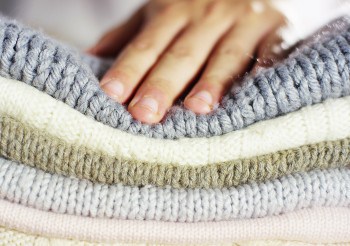 Fleece can have different textures depending on what it is made of. But generally, the texture of fleece is softer than wool. Some types of fleece can even feel similar to cotton. This is what makes fleece so great as a lining for clothes. It feels soft against your skin and isn’t usually itchy.
Fleece can have different textures depending on what it is made of. But generally, the texture of fleece is softer than wool. Some types of fleece can even feel similar to cotton. This is what makes fleece so great as a lining for clothes. It feels soft against your skin and isn’t usually itchy.
Wool can sometimes feel dense and itchy, especially over time. Part of this is due to the natural texture of the fibers, which can’t be changed. A lot of the denseness in texture is because of the weight of wool.
Most types of wool also contain something called lanolin, which causes allergies in some people. Even though wool may feel soft, being allergic to it can cause itchiness and discomfort.
But, since wool can come from so many different animals, some are softer than others. For example, cashmere is one of the softest wools and won’t feel as dense and itchy.
Alpaca is also a very soft wool fabric, and it doesn’t contain lanolin which means that people with wool allergies can still wear it. However, it is important to keep in mind that softer and better quality wool can be more expensive.
Moisture Wicking
Both fleece and wool do a great job of repelling moisture. Animal-based natural fibers like wool tend to have high water repellency to keep the animals dry. As long as wool doesn’t become saturated, it should do a great job at wicking away moisture.
Fleece is also moisture-wicking because it doesn’t absorb a lot of moisture. Even when used as a lining for clothes, if the outer fabric gets wet, the inner fleece layer will remain fairly dry. Even if fleece does become saturated, remember that it will also dry quickly.
In terms of moisture-wicking abilities, you can’t go wrong with either fabric. Just keep in mind your activities and the weather conditions when deciding which to wear.
Ease of Care
Fleece is very low maintenance and doesn’t require special treatment or detergents. It is very easy to care for and you can wash it in the washing machine with your other clothes. The only thing to avoid with fleece is using high heat. Synthetic fibers can become damaged when exposed to high heat. The fibers could even melt, which would ruin the texture of the fabric.
The best way to care for wool fabric is to hand-wash it. When washing wool. By hand, it is recommended to use lukewarm water and a mild detergent, or one that is specially made for wool. Be careful not to wring the water out of the fabric. Instead, you should squeeze it out gently.
When drying wool, lay it on a flat surface. Do not hang it up to dry because it can lose its shape. You should never put wool in the dryer because it can shrink very easily. Another precaution to take with wool is to avoid using bleach because the chemicals are too strong for the fibers. For knit wool fabrics like sweaters, you should fold them instead of hanging them so that they don’t stretch out.
Cost
Wool is more expensive than fleece. This is because animals that produce wool can only be shorn once a year. That means that the supply of wool is lower and it isn’t as easy to produce, which accounts for a higher cost. Also, rarer types of wool such as qiviut, cashmere, and alpaca will cost more and are some of the most expensive fabrics in the world.
On the other hand, fleece is cheaper since it is synthetic. It is also easier to produce since it is man-made. All that is involved in making fleece is a series of chemical reactions. All of these factors account for the lower cost.
Uses
Wool and fleece have very similar uses. They are both used for outerwear that would be worn in cold weather. Some specific examples of what they are used for include blankets, scarves, coats and socks.
Wool is also used to make sweaters, while fleece can be used by itself or as a lining under other fabrics, like denim jackets. The major difference between fleece and wool is that fleece is used more for performance wear while wool is used more for casual or business attire such as suits and pants.
Pros and Cons of Wool

I’ve covered a lot of information here, so let’s do a brief review of the pros and cons of wool. Some of the favorable qualities of wool:
- A natural fiber
- Warm
- Breathable
- Moisture-wicking
Since wool is a natural fiber, it is also sustainable. Being sustainable is very important for people who prefer eco-friendly fabric choices.
Wool also has its cons, which leads some people to steer away from it. Some of the cons include:
- Wool requires more care.
- Some people can be allergic to lanolin.
- It is more expensive than other fabrics.
Another quality of wool that hasn’t been previously mentioned is that it is not vegan. Even though animals aren’t harmed in the wool collection process, it still comes from animals. That means that some people prefer plant-based or synthetic fabrics over wool.
Pros and Cons of Fleece

Fleece also has pros and cons. Let’s do a review of some of them now. When compared to wool, fleece is:
- Cheaper
- Dries faster
- Easier to care for
- Lightweight
Another benefit to fleece is that it is vegan, so it is a great choice for people who want a warm fabric that doesn’t come from animals.
Fleece also has cons that lead some people to prefer wool instead. Some of the cons include that fleece is:
- Synthetic
- Not as warm as wool
- Not as breathable as wool
Being synthetic discourages some people from purchasing fleece because it isn’t an environmentally friendly fabric choice. However, there are some types of fleece that are made with recycled materials.
Popular Products Made of Fleece and Wool
Wool Blanket
 This wool blanket is great for camping or outdoor winter sporting events. It is affordable and comes in three colors.
This wool blanket is great for camping or outdoor winter sporting events. It is affordable and comes in three colors.
It is made of 80% wool and 20% synthetic fibers, but the synthetic fibers make the blanket less prone to shedding and hypo-allergenic. Hand-washing is preferred, but this blanket can also be washed by itself in the washing machine as long as you use a wool detergent and the delicate cycle.
Fleece Blanket
 This soft fleece blanket is great for lounging around the house. It comes in 14 different colors and 5 different sizes, so you’re sure to find one that suits your needs.
This soft fleece blanket is great for lounging around the house. It comes in 14 different colors and 5 different sizes, so you’re sure to find one that suits your needs.
While not made from wool, this blanket is almost as warm as wool and is machine washable, making it easy to care for. It is great for pets, too!
Which Is The Better Choice?
Wool and fleece are both great fabric choices for wearing when it gets cold. But, it can be hard to determine which one is the better choice. It ultimately depends on what you are looking for in your choice of fabrics and what kind of activity you are participating in.
You may think wool is a better choice if you prefer natural fabrics over synthetic ones. If you are trying to be more environmentally conscious, then wool is more sustainable than fleece. Since it is made without chemicals, producing it doesn’t do as much harm to the environment. Wool is also warm, extremely durable, and does an excellent job of keeping you dry.
Wool tends to be used more for “nicer” and more stylish winter clothing, making it a great choice to wear when shopping or spending time outdoors doing more leisurely activities. After all, being more expensive and high-maintenance as far as care is concerned means you might not want to wear it every day or while doing heavy activity like working outdoors or exercising, for example.
There are also some other reasons why you might not think wool is the better choice. It does come from animals, so if you are vegan, you may prefer to wear fleece. In addition, some people are allergic to wool, so they can’t wear it and opt for fleece instead.
If being a synthetic fabric isn’t a major concern for you, and you want a cheaper alternative to wool with similar qualities, then fleece is a great choice. Fleece is also better for everyday wear due to being easier to care for. If you spend a lot of time outdoors in the cold hiking, exercising, or working, then fleece is probably the better choice for you.
The bottom line is that if you are in the market for new winter clothing for a specific purpose, just keep in mind the qualities of fleece and wool before deciding. You can’t go wrong with either. It ultimately depends on your personal preference as far as fabrics go and your reasoning behind wearing them.
Conclusion
I hope you found this guide helpful for determining the difference between wool and fleece. There are pros and cons to both, so if you have to decide between the two, it’s just a matter of personal preference. However, both fabrics will generally keep you very warm and dry and will last a long time as long as you care for them. Don’t forget to share this article and leave a comment. Thanks for reading!